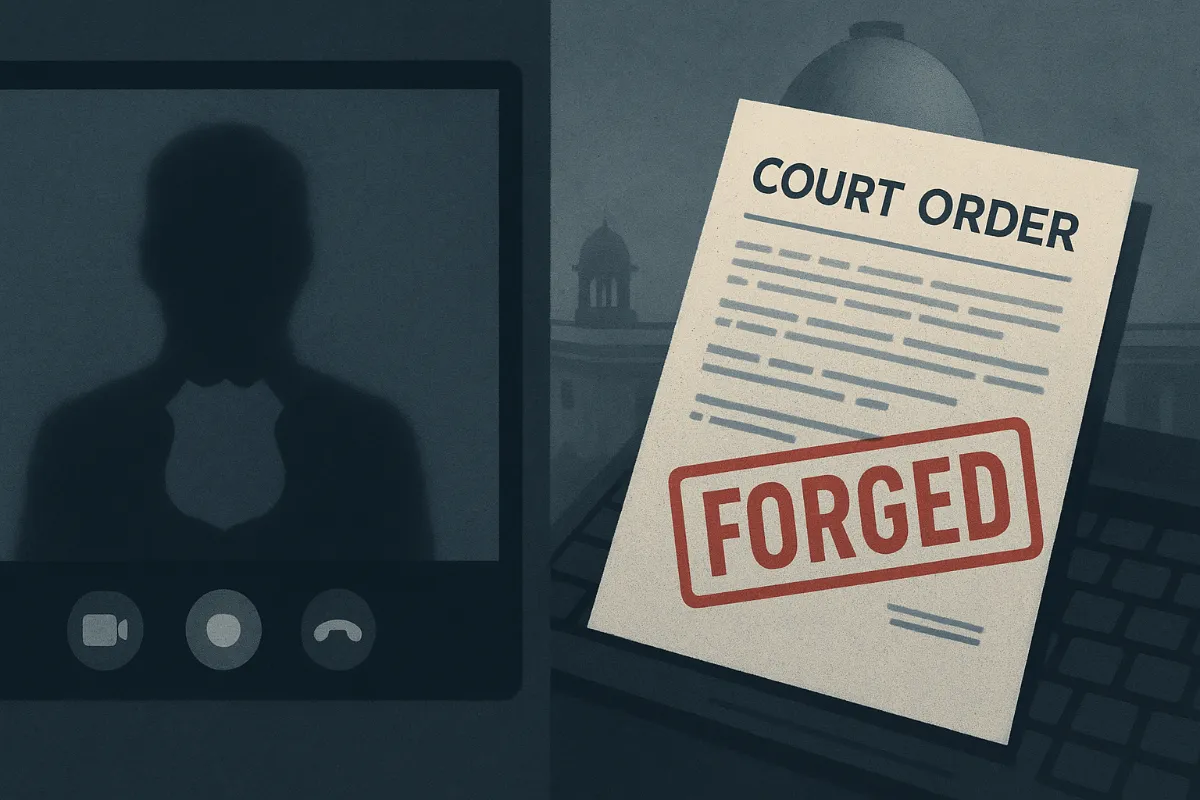The Supreme Court took suo motu note after scammers used forged orders to extort ₹1.05 crore; the Bombay HC exposed insider forgeries. The fix: re-authenticate every document.
 Brajesh Mishra
Brajesh Mishra

The Supreme Court has begun a suo motu matter after a 73-year-old Ambala resident alleged scammers used forged Supreme Court orders to coerce transfers totaling about ₹1.05 crore. In a separate order the next day, the Bombay High Court denied bail in a Navi Mumbai case involving alleged insider forgery of a judge’s signature and tampering with court records to generate heirship documents. Read together, the two proceedings highlight risks at both ends of the system: external cyber fraud and insider misuse of access. The Times of India+1
Both matters remain sub judice. What’s clear from the judicial orders and official advisories is the policy priority: preserve public confidence by making authenticity easy to verify—for citizens receiving a “court order” on a screen and for administrators protecting internal systems.
Q1. What is a “digital arrest” scam?
A video-call fraud where criminals pose as police/ED/CBI, show forged court orders, and coerce transfers under threat of arrest. The Times of India
Q2. Did the Supreme Court open a case on this?
Yes. The SC initiated a suo motu matter after an Ambala complainant alleged forged SC orders were used to extort her savings. The Indian Express
Q3. What happened in the Panvel insider case?
A clerk and two advocates allegedly forged a judge’s signature, deleted entries from the court CIS, and generated fake heirship certificates; bail was denied. newsband.in
Q4. How is the government responding to cyber-enabled forgeries?
India’s I4C says it has blocked thousands of scam accounts (Skype/WhatsApp) and is rolling out analytics and deepfake detection tools with partners. Press Information Bureau
Q5. How can citizens verify a court order?
Look for digitally signed PDFs from official domains; cross-check QR/hash on court portals; when in doubt, do not pay and call the 1930 cyber helpline. (Practices vary by court; verification portals are expanding.) Press Information Bureau






Sign up for the Daily newsletter to get your biggest stories, handpicked for you each day.
 Trending Now! in last 24hrs
Trending Now! in last 24hrs